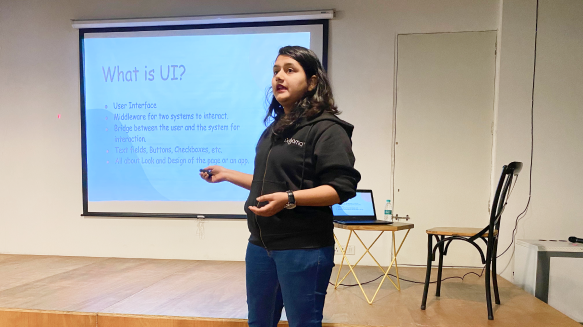All you need to know about Infrastructure-as-Code and Infrastructure Automation
Managing IT infrastructure was one of the most difficult jobs in the past. For an application to run, the hardware and the software needed to be manually managed and configured. This took a lot of effort, time, and money. However, in recent years, things have changed drastically. Trends like cloud computing revolutionized and improved the way organizations handled their infrastructure.
As technology progressed, a lot of new practices started driving infrastructure management and began to trend. One of the most popular and exciting of these trends today is “Infrastructure as Code” or IaC.
Before I get into the nitty-gritty of how Infrastructure as code really works, let me first clear the air around what IaC essentially is.
What is Infrastructure as Code?
Wikipedia defines IaC as follows:
Infrastructure as code (IaC) is the process of managing and provisioning computer data centers through machine-readable definition files, rather than physical hardware configuration or interactive configuration tools.
Let’s try to understand the above definition in simpler words:
Infrastructure as code (IaC) means managing your IT infrastructure using configuration files.
So, now where you store and manage your code is also a code, in the form of configuration files. Sounds a little tedious right, more code? Well, I know what you’re thinking. “Why would I even dare to take so much hassle?”
Let’s address that too.
Why IaC?
Since time immemorial, managing IT infrastructure has been a manual process. IT personnel would physically put servers in place, manage and configure them. That’s a load of work and a lot of reliance on the IT person, right? Infrastructure as Code came to the rescue, much to the relief of companies and their IT teams. Here’s how it combat the problems in the existing IT setup.
Cost
Hiring professionals to perform necessary tasks at each step of the process was required for performing things manually. These professionals included network engineers, hardware maintenance technicians, and many more. There was an additional cost of managing those people. This would also add complexity to the communication inside the organization.
The cost would increase drastically if you were building and maintaining your own data centers. With IaC, you ended up killing two birds with one stone: cost of servers and cost of technicians.
Scalability and availability
Since manual configuration was slow, applications often struggled with spikes when the traffic was high. The IT personnel would have to be on their feet and set up the servers every now and then to manage the load. This ended up impacting your business’ availability to the customers. If the organization didn’t have backup servers, then the application could be unavailable for long periods. This could surely make the customers unhappy. Not to mention you couldn’t scale up and down automatically, which meant any new preemptive surge planning required waiting for the IT team to up your server capacity before executing any new release or campaign. Hence, scaling up was slow.
Monitoring and performance visibility
When you had all of the infrastructure in place, the next hurdle would be to keep an eye on it and ensure it’s performing as per your expectations. When you encounter an issue, how do you exactly know where in the infrastructure the issue is coming from? Is it the network, the server, or the application? Invariably, you ended up manually digging into each component to find one. Tedious, right? Instead, when your infrastructure is tied in as code, you can use software to get to the problem faster and monitor it automatically.
Inconsistency
There is an old saying that “ too many cooks spoil the broth.”
Similarly, when many people work together on manually deploying configurations, several inconsistencies and errors end up coming into the picture. IaC took charge and made it all consistent.
Now that you know there was a clear need for IaC, here’s all that IaC has in store for you to benefit your growth.
Infrastructure as Code Benefits
Here’s a list of benefits that your organization would reap by choosing IaC over traditional infrastructure.
Speed
The first significant benefit IaC provides is speed. It enables you to quickly set up your complete infrastructure by running a script.
Consistency
Manual processes can result in errors. Humans can make mistakes. As we know, manual infrastructure management will result in discrepancies, no matter how hard you try. IaC solves that problem by having the config files themselves be the single source of truth. That way, you guarantee the same configurations will be deployed over and over, without discrepancies.
Accountability
This one is quick and easy. Since you can version IaC configuration files like any source code file, you have full traceability of the changes each configuration suffered. No more guessing games about who did what, and when.
Lower Cost
One of the main benefits of IaC is, without a doubt, lowering the costs of infrastructure management. By employing cloud computing along with IaC, you dramatically reduce your costs. That’s because you won’t have to spend money on hardware, hire people to operate it, and build or rent physical space to store it.
You see, every time you have smart, high-paid professionals performing tasks that you could automate, you’re wasting money. All of their focus should be on tasks that bring more value to the organization. And that’s where automation strategies, Infrastructure as Code among them, come in handy. By employing them, you free engineers from performing manual, slow, error-prone tasks so they can focus on what matters the most.
Finally coming to the elephant in the room, let’s discover how it all works.
How Does Information Automation Work?
IaC tools can vary as far as the specifics of how they work, but we can generally divide them into two main types: the ones that follow the imperative approach, and the ones who follow the declarative approach.
The imperative approach “gives orders.” It defines a sequence of commands or instructions so the infrastructure can reach the final result. A declarative approach, on the other hand, “declares” the desired outcome. Instead of explicitly outlining the sequence of steps the infrastructure needs to reach the final result, the declarative approach shows what the final result looks like.
Infrastructure automation lets you perform tasks with reduced human assistance in order to control the hardware, software, networking components, operating system (OS), and data storage components used to deliver information technology services and solutions.
Conclusion
Infrastructure as code is a crucial part of the DevOps movement. If you think of cloud computing as the first step to solving many of the problems caused by manual IT management, then it’s fair to say the IaC is the next logical step.
Infrastructure as Code has many benefits, but it also introduces a series of challenges. However, the pros outweigh the cons, and it is an investment well worth undertaking.










